How tall is an RV? This is a question that we often get asked, and it’s a good question! There are many different types and sizes of RVs, so it can be tricky to determine the height. In this article, we’ll give you tips on how to choose the right one for your needs, and provide a guide to the different heights of RVs.
Table of Contents
What’s the Average Height of an RV?
However, because there are a variety of different types and sizes of RVs available, the height may differ significantly. For example, a pop-up camper is typically only about seven or eight feet tall, while a fifth wheel can be up to 14 feet tall.
So, what’s the tallest RV on the market? That would be the EleMMent PALAZZO by Marchi Mobile. This luxury RV clocks in at an impressive 13.42 feet tall!
Of course, size isn’t everything when it comes to RVs. There are plenty of smaller options that are just as comfortable and offer all the same amenities as their larger counterparts.
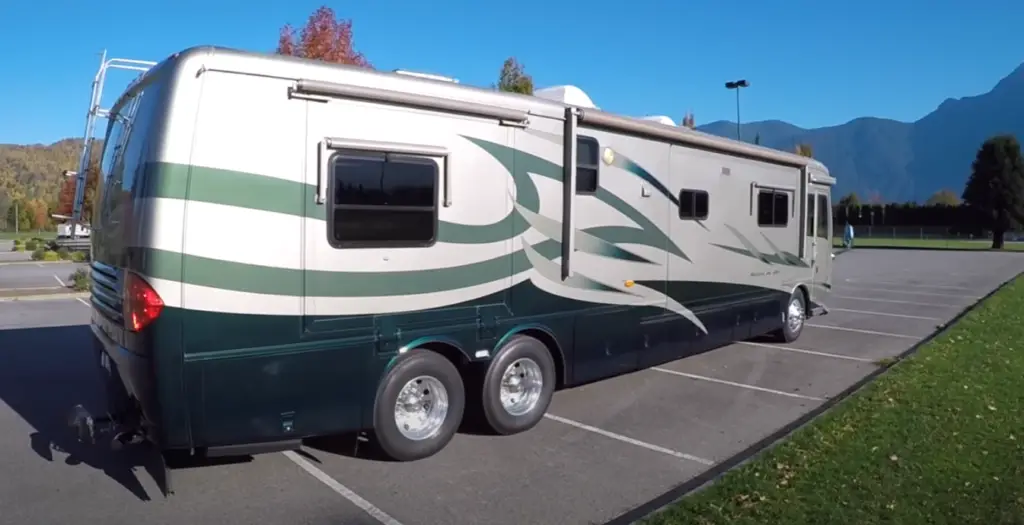
Federal And State Regulations On RV Height
There are a few federal and state regulations you should be aware of when it comes to RV height. The first is the Federal Bridge Formula, which is a set of regulations that govern how much weight can be carried on a certain length and width of the bridge. This formula dictates that the maximum weight for a typical RV is 80,000 pounds.
The second regulation to be aware of is the Interstate Highway System Designated Facilities Height Clearance map. This map shows the maximum heights for bridges and overpasses on the interstate highway system. It’s important to note that this map isn’t always accurate, so it’s always best to err on the side of caution and assume that an overpass is lower than what’s listed on the map.
The last regulation to be aware of is the Federal Highway Administration’s National Maximum Height Limit. This limit is 80.01 feet, which means that any RV over this height must have a permit in order to travel on the highway.
Average Height of a Bridge
The average height of a bridge is about 14-16 feet. This means that if you’re driving an RV that’s taller, you’ll need to find a different route. [1]
There are some exceptions to this rule, however. Some bridges are designed to accommodate RVs that are up to 20 feet tall. These bridges are typically found in areas where there are a lot of RVs, such as campgrounds and RV parks.

If you’re not sure whether or not a particular bridge will be able to accommodate your RV, you can always call ahead and ask. The staff at the Department of Transportation can usually give you accurate information about the height of bridges in your area.
Freeways and Highways
In general, the height limit for vehicles on freeways and highways is 13 feet.
When it comes to bridges on freeways and highways, the average height is about 20 feet.
Arterial
The height limit for vehicles on arterial roads is typically 13 feet.
Some states have raised the height limit to 14 feet in order to accommodate RVs. If you’re not sure about the height limit in your state, you can always call ahead and ask.
Collector
Collector roads usually have a height limit of 13 feet for vehicles.
Local
The height restriction for cars on local roads is generally 13 feet. If your RV is longer than 13 feet, you’ll need to take a different road.
Why You Need To Be Careful
You need to be careful when calculating the height of your RV. If you’re not, you could end up being too tall for some bridges and tunnels. Make sure to check the height restrictions before you go anywhere!
Here are a few things to bear in mind when thinking about the height of your RV:
- The average RV is between eight and nine feet tall.
- Some RVs can be as tall as 11 feet.
- You will need to take into account the height of any added accessories, such as solar panels or antennas.
- The type of roof (e.g., flat, peaked) can also affect the overall height of the RV.
As you can see, there are a few factors that can affect the height of your RV. Make sure to take all of them into account when planning your next trip!

Interior Vs Exterior Height of An RV
Did you know that there are two different types of heights when it comes to RVs? There’s the exterior height and then there’s the interior height.
This is the measurement from the ground to the highest point on the RV. For many people, this is an important number because it determines how tall of a clearance they’ll need when driving under bridges or into parking garages. But, did you know that there’s also an interior height?
The interior height is measured from the floor to the ceiling and it can be quite different from the exterior height. For example, a fifth-wheel RV might have an exterior height of 12 ft but an interior height of only 11 ft.
Of course, there are also RVs that have slide-outs and these can affect the height as well. For example, a fifth-wheel RV with a slide-out might have an exterior height of 12 ft but when the slide-out is extended, the interior height could be increased to 14 ft. So, it’s important to know whether or not an RV has a slide-out and how that might affect the height.
Class A Motorhomes
Cl. A motorhomes are some of the largest RVs. They can be as long as 45 feet and as tall as 13. It’s not uncommon for a Class A to have multiple slide-outs, which can really increase the interior height and make it feel more like a home than an RV. If you need lots of space and plenty of headroom, then a Class A motorhome is probably going to be your best bet.
Of course, with all that space comes a lot of weight. Cl. A motorhomes can weigh up to 30,000 pounds or more. So, if you’re planning on doing any serious traveling in your RV, you’ll need to make sure that your tow vehicle can handle the weight.
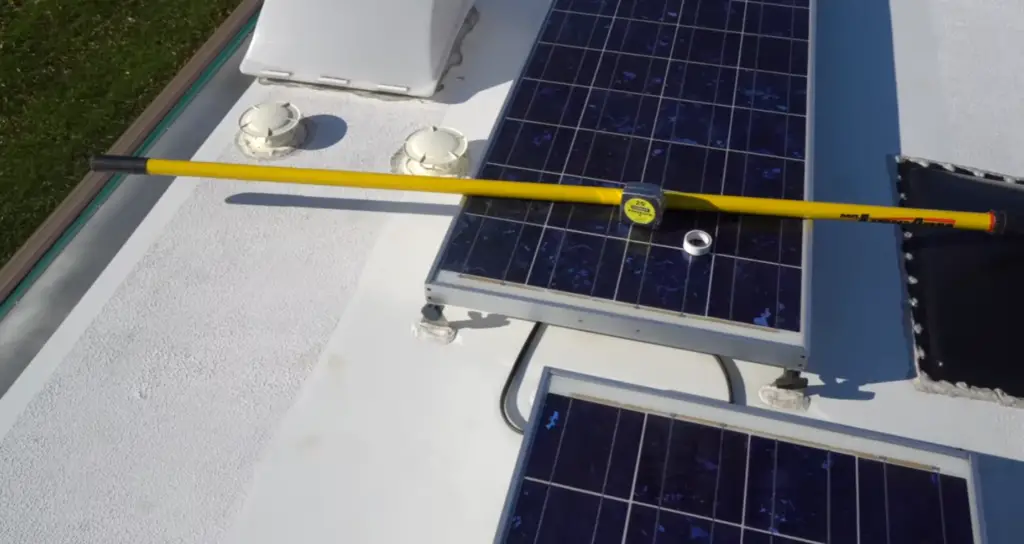
They are also some of the most expensive RVs. So, if you’re looking for a luxurious RV, then you’ll probably want to opt for a Class A. But, if you’re just looking for a simple RV that you can use for weekend getaways, then there are other options that might be more suitable for your needs.
Class B Motorhomes
Cl. B motorhomes are much smaller than those of Class A but they still offer plenty of space and headroom. They range in length from 18 to 25 feet and in height from about seven to nine feet. Many Cl. B motorhomes also have a slide-out, which can really increase the interior space.
They are less expensive than Class A.
Class C Motorhomes
Cl. C motorhomes are similar in size to Class B but they typically have an extra bed over the cab area. This extra bed is great for families who want to travel together. Class C motorhomes usually range in length from 22 to 32 feet and in height from about eight to 11 feet. [2]
Like Class B, Cl. C motorhomes are usually less expensive than Class A motorhomes but they’re still more expensive than most other types of RVs. So, if you’re looking for a simple RV that won’t break the bank, then a Class C motorhome might be a good option.
How Tall Is A Class A Motorhome?
The average Cl. A motorhome is between 12 and 13 ft tall. Its height can vary depending on the make and model. Some are taller than others.
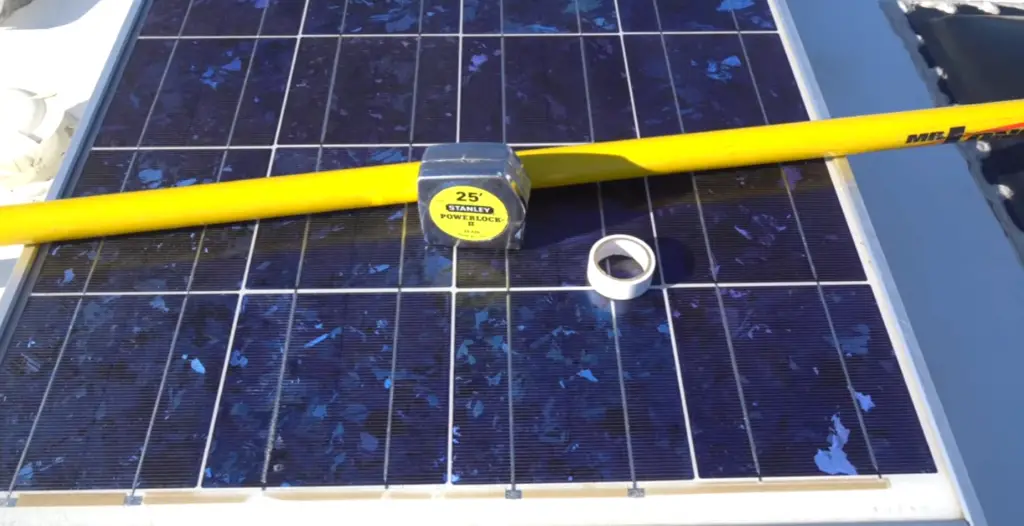
How Tall Is A Class B Motorhome?
A Class B motorhome is typically between 19 and 21 ft long. Its average height is about 11 ft, with some models being as tall as 13 ft.
They are the smallest type of RV, and they’re usually built on a van chassis. That makes them very easy to drive and maneuver, but it also means that they don’t have a lot of space inside.
How Tall Is A Class C Motorhome?
Class C are typically between 21 and 32 ft long, with an average height of 11 ft. They are shorter than Class A but longer than Class Bs. The extra length allows for more storage and interior space than a Class B, but they are still easy to drive and maneuver.
Most Class C motorhomes have a cab-over section where you will find a bed or additional storage. This is one of the things that makes them taller than other types of RVs. The height of the cab-over section will vary depending on the model and make of the RV.
How Tall Is An Average Travel Trailer?
The type of RV will make a difference in its overall height. For example, fifth wheels tend to be taller than travel trailers. That’s because they have that extra space over the truck bed for storage. Class A motorhomes are also generally taller than other types of RVs since they need that extra clearance for the engine.

Of course, the size of the RV will also affect its height. A smaller RV will obviously be shorter than a larger one. But even within the same type of RV, there can be a lot of variation in height. For example, a small pop-up camper might only be seven or eight feet tall, while a large fifth wheel could be closer to thirteen feet tall.
Finally, keep in mind that the height of your RV can also be affected by things like the size of your tires or whether or not you have an air conditioner installed. So if you’re wondering how tall is an RV, it’s important to consider all of these factors before making a final decision.
What’s the Average Height of a Fifth Wheel Camper?
The average 5th-wheel camper is between 12 and 13 feet tall. They’re also generally around eight feet wide. However, there is some variation in size among different models and brands. [3]
So, how does this compare to other types of RVs? Fifth wheels are taller than travel trailers, which typically range from nine to ten feet in height. But they’re not as tall as motorhomes, which can be up to 14 ft tall.
One advantage of a fifth wheel’s taller stature is that it gives you more headroom inside the RV. This can be especially beneficial if you plan on doing a lot of cooking or spending time in the RV with friends and family.
How to Make Sure You Never Have A Clearance Problem
The first step is to know the height of your RV. Most RVs will have this information listed on a sticker somewhere on the outside. If you can’t find it, you can always measure it yourself with a tape measure. Once you know the height of your RV, you need to make sure that you’re aware of the clearance heights of any bridges or tunnels that you’ll be traveling under.
There are a few ways that you can do this. The first is to check out online resources like Google Maps or MapQuest. They’ll usually have the clearance heights for bridges and tunnels listed. Another way is to call ahead to the state department of transportation or the highway patrol and ask them for specific clearance information.
Measure Your RV
You can do this with a tape measure or by using a level. If you’re using a level, simply measure from the ground to the highest point on your RV.
Once you have your measurement, double-check it against the information that’s listed on your RV. If there’s any discrepancy, go with the measurement that you took yourself. It’s always better to be safe than sorry!
Now that you know how tall your RV is and what the clearance heights are for any bridges or tunnels that you’ll be traveling under, you can hit the road with confidence! Safe travels!
Plan Your Route
One of the best ways to avoid clearance problems is to plan your route in advance. This way, you can map out a route that takes you under bridges and through tunnels with plenty of clearance.
If you’re not sure about the clearance heights of specific bridges or tunnels, there are a few resources that you can use to find out. Google Maps and MapQuest are both good options. You can also call ahead to the state department of transportation or the highway patrol for specific information.
How to Measure Exterior RV Height
To get an accurate measurement of your RV’s height, you’ll need to measure from the ground to the highest point on the RV. This is typically the air conditioner or vent on the roof. Use a tape measure or a ruler to get the height measurement.
Another way to measure your RV’s height is by measuring from the ground to the top of the tallest object inside the RV. This could be a cabinet, bed, or table. Keep in mind that objects inside the RV can move around, so this method may not be as accurate as measuring from the ground to the highest point on the exterior of the RV.
Once you have your measurements, you can compare them to standard heights for different types of RVs. For example, a typical Class A motorhome is between 11 and 13 feet tall, while a travel trailer is usually between eight and nine feet tall. [4]
Now that you know how to measure the height of your RV, you can start planning your next road trip! Just be sure to check the height clearance of any bridges or tunnels before you go. And if you have any questions about RV height, feel free to ask a certified RV technician for help.
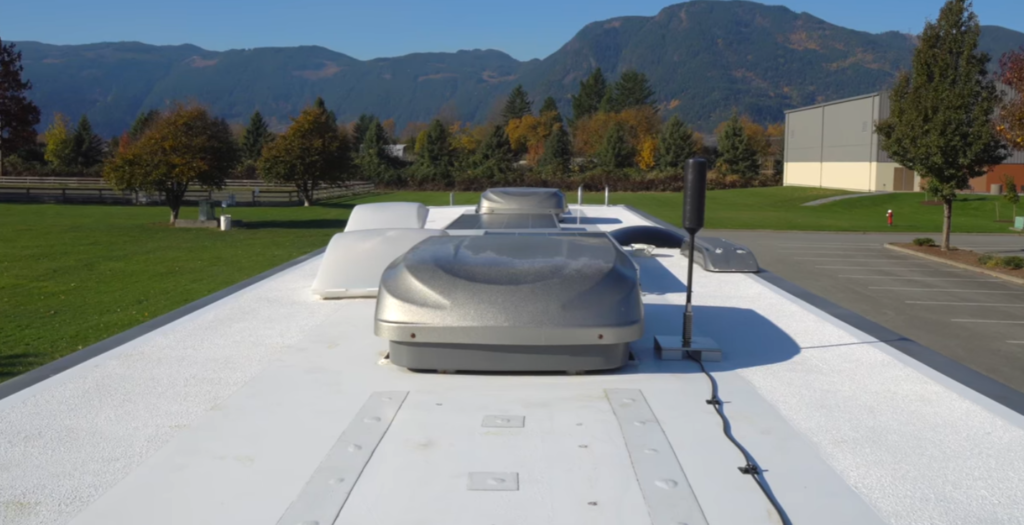
Why is it important to measure RV height?
There are a few reasons why it’s important to know the height of your RV. First, many bridges and tunnels have height restrictions. If your RV is too tall, you could damage the roof or sides of the RV when going under a low bridge. Second, some campsites have height limits for RVs. Knowing the height of your RV will help you find a campsite that’s a perfect fit.
Finally, measuring the height of your RV can be helpful if you ever need to replace something on the roof, like the air conditioner or satellite dish. Knowing the exact height of your RV will make it easier to find replacement parts that fit perfectly.
When RV Height Matters
There are a number of situations where the height of your RV will be important.
For example, if you’re planning on doing any serious off-roading, the height of your RV can make a big difference in whether or not you’ll be able to make it through some of the tougher terrains.
Additionally, if you’re going to be spending any time in areas with low overhangs (like parking garages or drive-thrus), then knowing the height of your RV is crucial so that you don’t end up damaging your rig.
Finally, if you’re just generally curious about how tall RVs can get, then read on! We’ll cover some of the tallest RVs out there.
Fuel Stations
One of the most common places where RV height becomes an issue is at fuel stations.
Most gas station pumps are only designed to accommodate vehicles that are up to 13’11” tall. This means that if your RV is any taller than that, you’re going to have some trouble filling up your tank.
There are a few ways around this problem. First, you can try to find a truck stop or travel center that has taller pumps. These types of gas stations are designed to accommodate big rigs, so they’ll definitely be able to handle your RV.
Another option is to use a portable gas can (or two) to fill up your tank. This isn’t the most convenient solution, but it will definitely get the job done if you’re in a pinch.
Finally, you can always just park your RV and then fill up your gas cans from the pump. This takes a little bit more time, but it’s usually the best option if you’re dealing with a really tall RV.
Covered Storage
If you’re not planning on using your RV for a while (or if you just want to keep it protected from the elements), then you might be considering covered storage.
Most storage facilities have height restrictions, so it’s important to know how tall your RV is before you try to store it.
The good news is that most RVs will fit in a standard-size storage unit. However, if your RV is taller than 12′, you might have to get a custom-sized unit or look for a facility that specializes in storing RVs.
Either way, covered storage is a great way to protect your investment and make sure that it’s ready to go when you are.
ATMs and Fast Food Restaurants
Another place where RV height can be an issue is at ATMs and fast food restaurants.
Most drive-thru lanes are only designed for vehicles that are up to 11′ tall, so if your RV is taller than that, you’re going to have to find another way to get your cash or your food. [5]
Fortunately, most banks and restaurants will have walk-up ATMs and ordering stations that you can use. This might not be the most convenient option, but it’s usually better than trying to squeeze your RV into a space that it’s just not meant for.
FAQ
What is the maximum height of an RV?
The maximum height of an RV is 13′ six”. This includes any type of towing device. [6]
How tall is a Class C RV?
The average Class C RV is 11 feet tall. But, there can be a lot of variation between different models, with some being as short as nine feet tall and others towering at 14 feet or more.
To give you a better idea of the range in heights, here are a few popular Class C RV models and their corresponding heights:
- The Winnebago Minnie Drop (17K) is one of the shortest RVs on the market, measuring in at just under nine feet tall.
- The Thor Axis (24.23) falls on the taller end of the spectrum, coming in at 13.42 feet tall.
- In between those two extremes is the Coachmen Freelander (21QB), which has a height of 11.42 feet.
How tall is a fifth wheel camper?
A fifth-wheel camper is typically between 12 and 13.
Useful Video: RV Overpass Crash Avoidance. How Tall Is Your RV?
Conclusion
As you can see, there is no one-size-fits-all answer to the question “how tall is an RV?” It all depends on the specific RV model and its features. However, we hope that this article has given you a better idea of what to expect when it comes to the height of RVs.
If you’re still not sure about how tall your RV will be, we suggest contacting the manufacturer or dealer for more information. Happy RVing!
References
- https://www.cruiseamerica.com/rv-adventures/rv-lifestyle/rv-height-clearance
- https://www.rvingknowhow.com/average-rv-height/
- https://rvblogger.com/blog/how-tall-is-a-5th-wheel-camper/
- https://www.godownsize.com/measuring-rv-camper-length-height/
- https://blog.campingworld.com/rv-basics/rv-height-clearance-some-things-to-think-about/
- https://trailandsummit.com/what-is-the-maximum-height-of-a-travel-trailer/

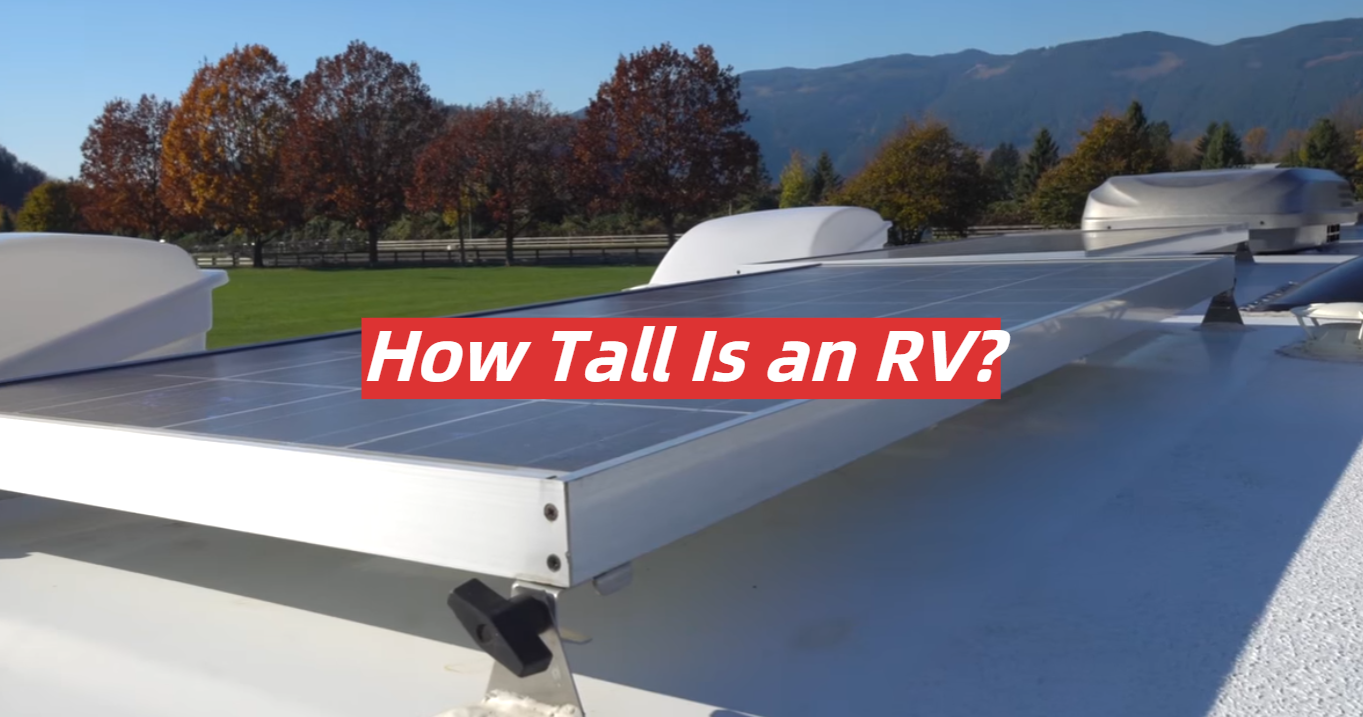




Leave a Reply